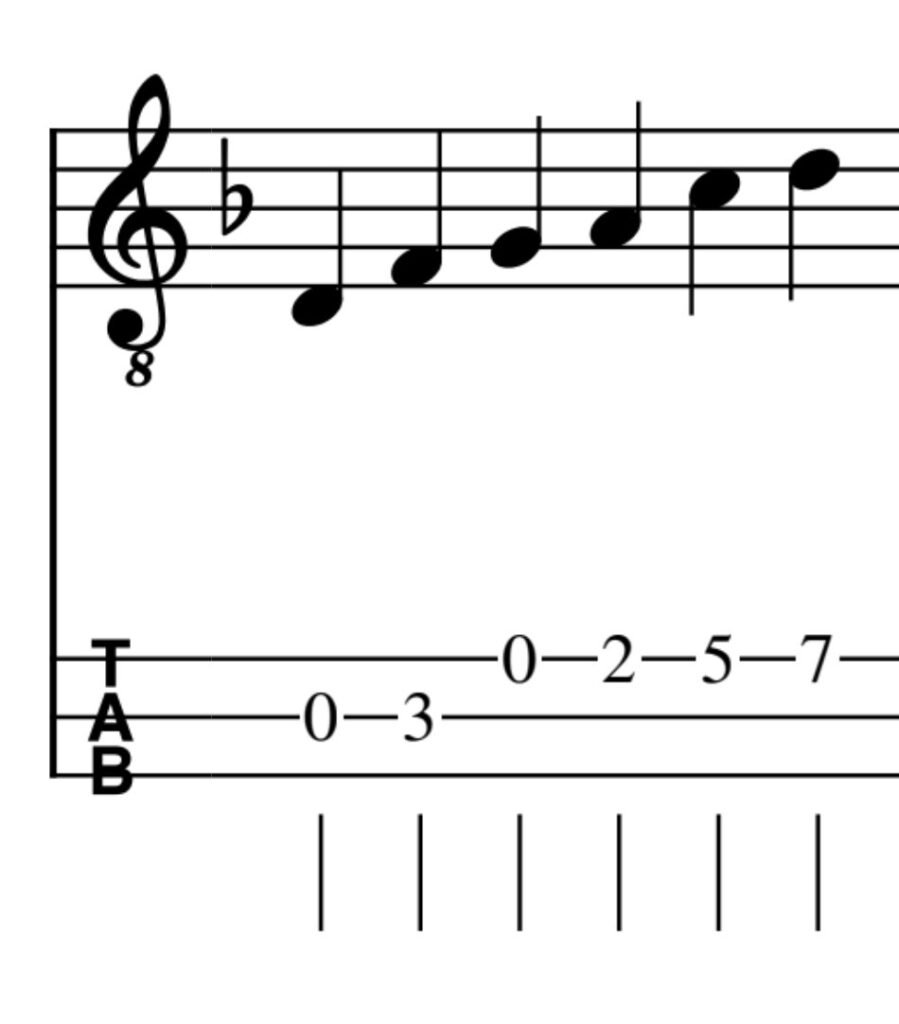I’m still very much a beginner especially when it comes to playing slide guitar, so I’ve been trying to find ways to improve. I find it all too easy to play the same riffs over and over without really improving my playing.
I have made this list of exercises that I can practice consistently to improve my technique alongside playing riffs.
Here is a list of 9 exercises that I like to dip in and out of whenever I feel like I need a bit of structure but without learning a particular riff. They aren’t in any particular order because they all help me and I don’t want to feel tied to practicing them all every time I play:
- Scales
- Hammer-ons
- Pull-offs
- Varying the number of strings played: Playing 1, 2 and 3 strings with slide
- Direction changes
- Length changes
- Speed changes
- Varying Vibrato Width and Speed
- Interspersing chords with single notes
I also have bought a really useful book that was recommended to me by a YouTube comment. The details are at the foot of the page.
Playing Any Scale With The Slide
This technique helps me to both practice my scales and also improve at playing single notes cleanly. I can either pluck between every note, or every other note with a slide between them, or even every 3rd or 4th note.
There are 2 ways of holding the slide itself:
- either use it to fret across all 3 strings, but just pluck one string or
- angle the slide to just touch the string to be played.
Either way it’s useful to practice muting the strings by lightly pressing down with the fretting hand between the nut and the slide or muting with the picking hand. Here are 2 examples to get you started:
Playing G Minor Pentatonic On Top String
In this example hold the slide at an angle and mute as required. Try each note separately , then sliding between 2 or more notes.

Playing D Minor Pentatonic On Middle String
Hold the slide across all 3 strings, Mute the strings as required. Again try varying how many note you play between each plucked note:

Playing D Minor Pentatonic On Middle And Top Strings
In this example there is movement across the strings. Try holding the slide across all 3 and playing the correct string. Then repeat with angling the slide to just touch the string that is being played. This helps with getting the angle of the slide just right:

Playing Open And Fretted Notes With The Slide
Playing open notes and then adding the slide with and without hammer-on helps to learn the correct pressure to use for the slide. You can either use a definite hammer-on technique to play a particular note or use more of a slide from a lower note up to a higher note.
You’ll find that the pressure required for the slide is far less that when you use a finger to fret the notes. I have found that I sometimes need to change my wrist position slightly to get the reduced pressure required without making my wrist ache. I suggest you experiment too.
Pull-offs With Slide
I like to try playing notes with the slide and then removing it with and without pull-off. This means removing the slide and either plucking the string or letting the string sound without being plucked again as in a pull-off. The technique is a little different than a pull-off using your finger. You need to flick the slide down towards floor rather than pulling it upwards.
Incidentally if you want to read more about hammer-ons and pull-offs without a slide I have a couple of helpful articles:
How-to-hammer-on-with-a-cigar-box-guitar
What Is A Pull-Off On The Cigar Box Guitar?
Playing 1, 2 and 3 Strings With Slide
This is a little trickier than it might first seem, partly because of the need to mute strings that have the slide resting on them but which you don’t want to sound. The scales exercise lets you concentrate on the difference between holding the slide across all 3 strings and just playing one note at a time vs. holding the slide at an angle to just touch 1 string.
This exercise involves holding the slide across more strings than you are playing. It’s probably easiest to start with playing 1, 2 or 3 strings whilst positioning the slide across all 3 strings. You can then move on to fretting 2 strings with the slide and playing 1 or 2 strings
Direction: Sliding Up and Down The Neck
Slides can move from a lower note to a higher or a higher note to a lower ( or even 1 followed immediately by the other). I’s worth spending a bit of time on each of these techniques separately so that you get a good smooth action:
Sliding Up The Neck
Don’t squeeze the neck too tight and keep the correct pressure on the slide. Practice slowly at first and try muting with the fretting hand.
Sliding Down The Neck One Fret at A Time
eg D to C#, C# to C etc
This helps to gain more control over the distance required between notes.
Sliding Up And Down The Neck
First try single note slides ( one or two frets) and then bigger jumps.
Varying the length of the slide up or down: really short to really long
Slides can be of very different lengths-
- A partial slide. This is where the slide moves less than 1 fret. A partial slide gives a bluesy feel. (make the note just a bit sharp- this gives the same effect as a bend- and is achieved by moving slide slightly up the fretboard)
- A grace note- such as moving from the 5th fret to the 7th where the 7th fret is on the beat and the 5th fret is just before.
- A wild slide- this means starting the slide at any point on the fretboard, not worrying too much about where you start, but concentrating on where you end up.
Varying the length of the slide up or down: moving fast and moving slow
Slides can also be played at different speeds. This really depends on what type of music you are playing and also how far you need to slide.
I’ve been practicing sliding at all different speeds. I find having a finger resting on the string behind the slide really helps to minimize the buzzing on a fretted instrument but sliding a finger on a metal string can make my finger quite sore if I’m not careful.
Vibrato
You can play vibrato without a slide, but using a slide gives a slightly different sound. In some ways it’s a bit like playing a mini slide up and down.
Playing vibrato with a slide on a fretless instrument can help if you miss the note a bit but I’m trying not to rely too much on vibrato to hide my inaccurate playing. The fret lines are there to help keep me in tune and I don’t want everything to sound a bit of a mess.
Amount Of Vibrato
I’ve found that I can get quite a lot more variation in my vibrato when playing with a slide rather than with a finger. Playing vibrato with finger can only go higher up the fretboard because the fret stops us going lower. However playing vibrato with a slide can move down the fretboard as well as up. In some ways, playing slightly down the fretboard gives us the same effect as a whammy bar on an electric guitar because I’m making the note go a bit flat.
I can start with a small vibrato on a note ( not moving up and down the fretboard very much) and then playing a wider vibrato by moving up and down a little more.
In this way I can choose to play a wide slow vibrato or a short quicker vibrato. I’m experimenting with different ways depending on the style and speed of the of the music I’m playing.
Chords interspersed with sliding note of scale
Practicing playing one finger power chords with the slide and then playing an individual string is helping me to get the angle right of the two different techniques.
It’s the difference between using the whole slide horizontally across all 3 strings and then tilting the slide so that just the end is touching a single string.
I’ve found that it is possible to hold the slide across all 3 strings and just play one note as well as tilting the slide to just touch one string and I want to get proficient in both as I think this will help me with my dexterity.
Digital Download
I made this little bookmark for myself to print out and keep to remind myself of techniques I can use to improve my slide playing and I’ve made it available to you too:
I Really Recommend This Book
I have found a particular book to be helpful when I want to practice particular riffs. It’s this one which I bought on Amazon:

Although the cover doesn’t really show how useful it is for slide techniques, many of the riffs can be played either with or without slide.
Here are my affiliate links which take you to Amazon to check out the current price. Although I often buy Kindle books. I really think the paperback is worth the extra money:
For Amaxon.com 101 Riffs and Solos for Cigar Box Guitar: Essential Lessons for 3 String Slide Cigar Box Guitar
For Amazon.co.uk 101 Riffs and Solos For Cigar Box Guitar: Essential Lessons for 3 String Slide Cigar Box Guitar
Brent has written loads of books for 3, 4 and 6 string guitars and ukuleles and mandolins. I will definitely be adding a few more of his books to my collection:
Videos
I have been documenting my journey on playing slide guitar and you can see it here:
